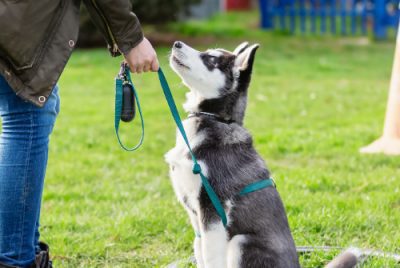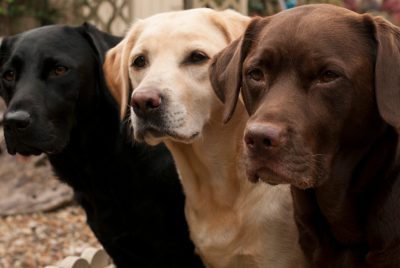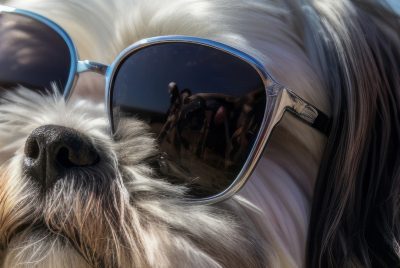Mastering How to Potty Train an Older Dog: Expert Tips
Post Disclaimer
We may earn a commission for purchases made using our links. Please see our Disclaimer to learn more.
Mastering How to Potty Train an Older Dog
Key Highlights
- Potty training an older dog can be challenging, but it is definitely possible with the right approach and consistency.
- Understanding the challenges of potty training an older dog is important, as they may have different needs and limitations than younger dogs.
- Preparing for potty training involves selecting the right tools and supplies, such as pee pads, dog doorbells, and crate training, and setting a consistent schedule.
- Following a step-by-step guide that includes establishing a potty area, recognizing and responding to potty cues, and incorporating positive reinforcement techniques can help in the potty training process.
- Dealing with setbacks and accidents is a normal part of potty training, and understanding why accidents happen and how to clean up and move forward effectively is essential.
- Advanced tips and tricks, such as addressing marking behavior and nighttime training, can be helpful for owners of older dogs.
- Maintaining potty training success requires consistency, monitoring for health-related issues, and adjusting routines as your dog ages.
Introduction
Congratulations on adopting an older dog! While older dogs bring joy, they can also pose challenges like potty training. Training an older dog may seem daunting, but it’s achievable with the right approach and patience. In this blog, we’ll provide a guide on potty training older dogs during their golden years and debunk myths. Let’s master potty training together!
Understanding the Challenges of Potty Training an Older Dog
Potty training an older dog is more challenging than training a young puppy. Older dogs have different needs and limitations to consider, especially with house training. Training may take longer due to existing habits and resistance to change, but with patience, consistency, and the right approach, you can successfully potty train your adult dog. Understanding the challenges of potty training an older dog is crucial to train them effectively.
Common Myths About Training Older Dogs
Several common myths surround the training of older dogs. One of the main myths is that old dogs cannot learn new tricks. While older dogs may have already formed certain habits, they can still learn and adapt to new behaviors, including potty training.
Another myth is that potty training an older dog is impossible or takes a long time. While it may take a little longer than potty training a young puppy, with patience, consistency, and positive reinforcement, older dogs can be successfully trained within a few weeks.
It’s important for pet parents to understand that potty training an older dog requires a different approach and may require more time and effort than training a young puppy. However, potty training an older dog is achievable with the right techniques and a lot of patience.
Preparing for Potty Training
Before starting potty training, prepare by selecting the right tools and setting a consistent schedule. Use pee pads as a designated area for older dogs to eliminate indoors. Consider crate training for supervision. Establish a routine with specific potty break times for success.
Selecting the Right Tools and Supplies
When potty training an older dog, using pee pads and crate training can be helpful. Pee pads offer a designated elimination area for pups unable to go outside. Opt for highly absorbent pads. Crate training teaches bladder control and provides a safe space for pups to learn and practice good behavior. Establishing a specific potty area, indoors or outdoors, reinforces desired behavior. If you do not want to use pee pads, adding a bell to your door will help your dog establish that he/she can go when he/she rings the bell. When you take your dog out, ring the bell and say, “Go potty. Your dog will associate the bell with being let out. Remember to praise your dog. Dogs like things to be routine, so every time you take him/her out, ring that bell. They will pick this up pretty quickly.
Setting a Consistent Schedule
Setting a consistent potty schedule is crucial for potty training an older dog. Dogs thrive on routine, so establish set times for potty breaks—morning, after meals, and before bedtime. Consistency reinforces the desired behavior. Take your dog to the designated spot at these times and give them time to eliminate. Be patient, praise, and reward them for proper elimination. You can train your older dog effectively with a set schedule and positive reinforcement.
Step-by-Step Guide to Potty Training Your Older Dog
Now that you are prepared and understand the challenges let’s dive into the step-by-step guide for potty training your older dog. This guide will help you establish a potty routine, teach your dog to recognize and respond to potty cues and incorporate positive reinforcement techniques for a successful training experience. Your older dog can become a well-trained potty companion with patience and consistency.
By following these steps and remaining consistent, patient, and positive, you can help your older dog master the art of potty training and ensure a clean and comfortable home environment for both of you.
Establishing a Potty Area
Establish a designated potty area, also known as a bathroom spot, when potty training your older dog. Choose an easily accessible spot away from high-traffic areas for outdoor potties. Use potty pads or a litter box for indoor spaces in a designated area like a bathroom or laundry room. Consistency is key in guiding your dog to the right spot for elimination.
Recognizing and Responding to Potty Cues
Recognize and respond to your dog’s potty cues for effective training. Each dog has unique signals like sniffing, circling, or whining. Pay attention to their behavior and body language to notice these cues. Take them to the designated potty area promptly. Avoid scolding for accidents; clean up calmly and reinforce good behavior by taking them outside. Consistency is crucial for successful potty training, as it helps prevent accidents in the wrong place and reinforces the desired behavior.
Incorporating Positive Reinforcement Techniques
Incorporating positive reinforcement techniques is a highly effective way to potty train your older dog. Dogs respond well to praise, rewards, and positive feedback, which helps them understand and repeat the desired behavior.
Here are some positive reinforcement techniques to incorporate into your potty training process:
- Praise and reward your dog immediately after they eliminate in the designated potty area.
- Use treats or their favorite toy as rewards for successful potty breaks.
- Establish a consistent verbal cue, such as “go potty,” and use it each time you take your dog to the designated area.
- Give your dog plenty of positive attention, praise, and petting when they eliminate in the right place.
By consistently using positive reinforcement techniques, you teach your older dog to associate eliminating in the designated area with positive experiences and rewards. This helps them understand and repeat the desired potty training behavior.
Dealing with Setbacks and Accidents
Be prepared for setbacks and accidents during potty training. Accidents are normal and should be handled calmly. Avoid scolding your dog; clean up calmly and reinforce desired behavior by taking them outside. Consult a professional if needed for guidance and support.
Understanding Why Accidents Happen
Accidents during potty training can happen for various reasons, including medical conditions like urinary tract infections or house soiling. Consult a veterinarian for diagnosis and treatment if you suspect a health issue. Other factors like loud noises or sudden environmental changes can also lead to accidents. Understanding the causes, including house soiling, can help address the issue and provide proper training and support to your older dog.
How to Effectively Clean Up and Move Forward
When accidents happen, clean up the soiled area well to remove any remaining smells. Dogs smell well; if they sense urine or poop odors, they might have accidents in that spot again.
To clean effectively, use a pet stain cleaner. Clean the area thoroughly and check with a blacklight for missed spots. Then, use a pet-safe odor remover to eliminate any lingering smells.
Keep up with potty training and reinforce good behavior. Give your dog many chances to go potty in the right place. Stay patient and consistent in training. Over time, accidents will decrease, and your dog will be fully trained.
Advanced Tips and Tricks
Once your older dog is potty trained, advanced tips can enhance their training. Address marking behavior by providing guidance to prevent indoor marking. Nighttime training is crucial for seniors; a consistent routine and frequent breaks can help minimize accidents.
Understanding your senior dog’s needs and adapting training techniques will lead to successful potty training.
Addressing Marking Behavior
Addressing marking behavior is essential for a fully potty-trained older dog, especially if they exhibit this behavior indoors. Marking behavior involves dogs urinating on vertical surfaces to mark their territory.
To address marking behavior, consider the following tips:
- Monitor your dog closely and intervene when they start exhibiting marking behavior.
- Clean any marked areas thoroughly to remove the scent and discourage re-marking.
- Consider using belly bands or diapers for male dogs to prevent marking indoors.
- Provide appropriate outlets for marking, such as designated outdoor areas or marking posts.
Consistency and positive reinforcement are key in addressing marking behavior. By redirecting your dog’s marking behavior to appropriate areas and rewarding them for eliminating in the designated potty area, you can successfully overcome marking challenges and reinforce the desired potty training behavior.
Nighttime Training Strategies
Nighttime training can be challenging for older dogs, especially if they have trouble holding their bladders overnight. Implementing consistent strategies can help minimize accidents and promote successful nighttime potty training.
Consider the following nighttime training strategies:
- Establish a consistent bedtime routine that includes a final potty break before bed.
- Limit access to water a few hours before bedtime to reduce the need for nighttime elimination.
- Take your dog out for a final potty break right before bedtime to empty their bladder.
- Consider using a crate or confining your dog to a small, easily cleanable area overnight.
Remember to be patient and consistent in your nighttime training efforts. With time and consistent reinforcement, your older dog will learn to hold their bladder overnight and have fewer accidents.
Maintaining Potty Training Success
Maintaining potty training success for your older dog is crucial for a clean home. Consistency is key in reinforcing desired behavior. Monitor your dog’s bathroom habits, and watch for changes or discomfort indicating health issues. Adjust the routine as needed for continued success and comfort.
Monitoring for Health-Related Issues
Monitoring your old dog’s health is important. Some illnesses may impact bladder control or bathroom behaviors. Regular vet visits aid in identifying and addressing health problems, and vets offer guidance on handling potty training issues.
Keep an eye on your dog’s bathroom habits. Note any changes in frequency, appearance, or routines. Maintaining records helps provide precise information to the vet and track improvements or concerns effectively.
Create a basic table like this:
| Date | Bathroom Habits |
| March 27 | Frequent urination, small amounts |
| March 29 | Normal bathroom routine |
| April 3 | More accidents inside, blood in urine |
Adjusting Routines as Your Dog Ages
As your dog ages, it’s important to adjust their potty training routines to accommodate any changes in their needs. Older dogs may experience mobility issues or changes in their physical abilities, impacting their potty training success.
Consider the following adjustments as your dog ages:
- Provide easier access to the designated potty area, such as installing ramps or using indoor potty pads.
- Offer more frequent potty breaks to accommodate their changing bladder control.
- Provide additional support and assistance for dogs with arthritic pain or mobility issues.
By adapting their potty training routines to their changing needs, you can ensure their comfort and continued success in maintaining potty training habits as they age.
Conclusion
Potty training an older dog may have its challenges, but it is achievable with patience, consistency, and the right techniques. Understanding your dog’s needs and behaviors is key to successful training. Accidents may happen, but positive reinforcement and a consistent schedule can help overcome setbacks. You can establish long-term success in potty training by maintaining a supportive environment and staying attuned to your dog’s signals. Building a strong bond through this process fosters good behavior and strengthens your relationship with your furry companion.
Frequently Asked Questions
Can an older dog be potty trained if it has never been trained before?
Yes, older dogs can be potty trained even if they have never been trained before. It may take more time and patience, but with consistency, positive reinforcement, and a proper training process, older dogs can learn new behaviors, including potty training.
How do I deal with stubborn potty training challenges?
Dealing with stubborn potty training challenges requires consistency, positive reinforcement, and patience. Stick to a consistent routine, use positive reinforcement techniques, and be patient with your dog. If necessary, seek guidance from a professional dog trainer.





